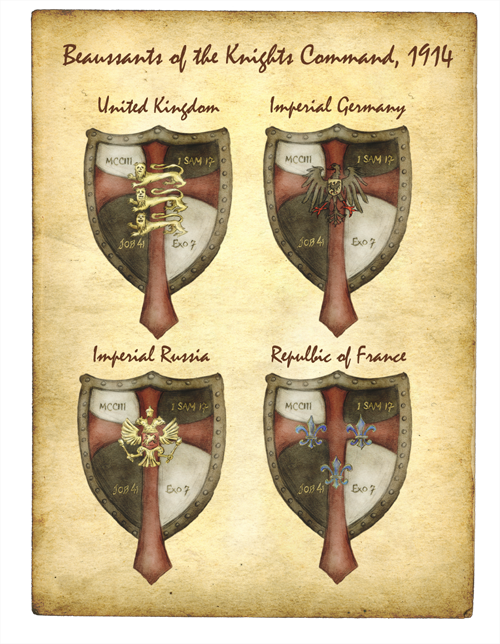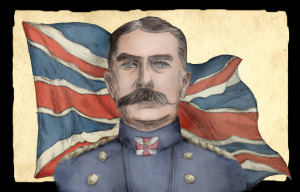Three Bible references mark the other corners, one each alluding to the three original commissions of the Order.
1 Samuel 17, where David slew Goliath with a slingshot and a smooth rock. A reference to the technologies of warfare.
Job 41, concerning the fearsome, unidentified Leviathan. A reference to as-yet-undiscovered creatures.
Exodus 7, the famous passage where the Egyptian magicians copy the miracles of God as performed through Moses. A reference to ancient magic and sorcery.
On occasion, the red and white has been swapped. Perhaps this was done to make the beaussant more closely resemble that of the St John’s Knights. After all, due to the clandestine nature of the Knights Command’s activities, more often than not they did not wish to draw unnecessary attention to themselves.
While the basic layout of the beaussant has remained consistent throughout the ages, various ‘personal touches’ have been sighted (and tolerated) from time to time. The names of the current Valiant are most regularly seen, written to the left of the national emblem. Missions or battles in which the forces have been engaged are often marked with the location and the date, usually on the vertical stem of the cross, below the national emblem. And (least endorsed of all), family or clan crests appear, very occasionally, to the right of the national emblem.
There is even a reliable tale of an English Commander Knight riveting the manufacturer’s logo from his motorcycle onto his beaussant. Perhaps he thought of it as a weapon of war. And no, it wasn’t Melphisolees Stort.
But I like his style.


